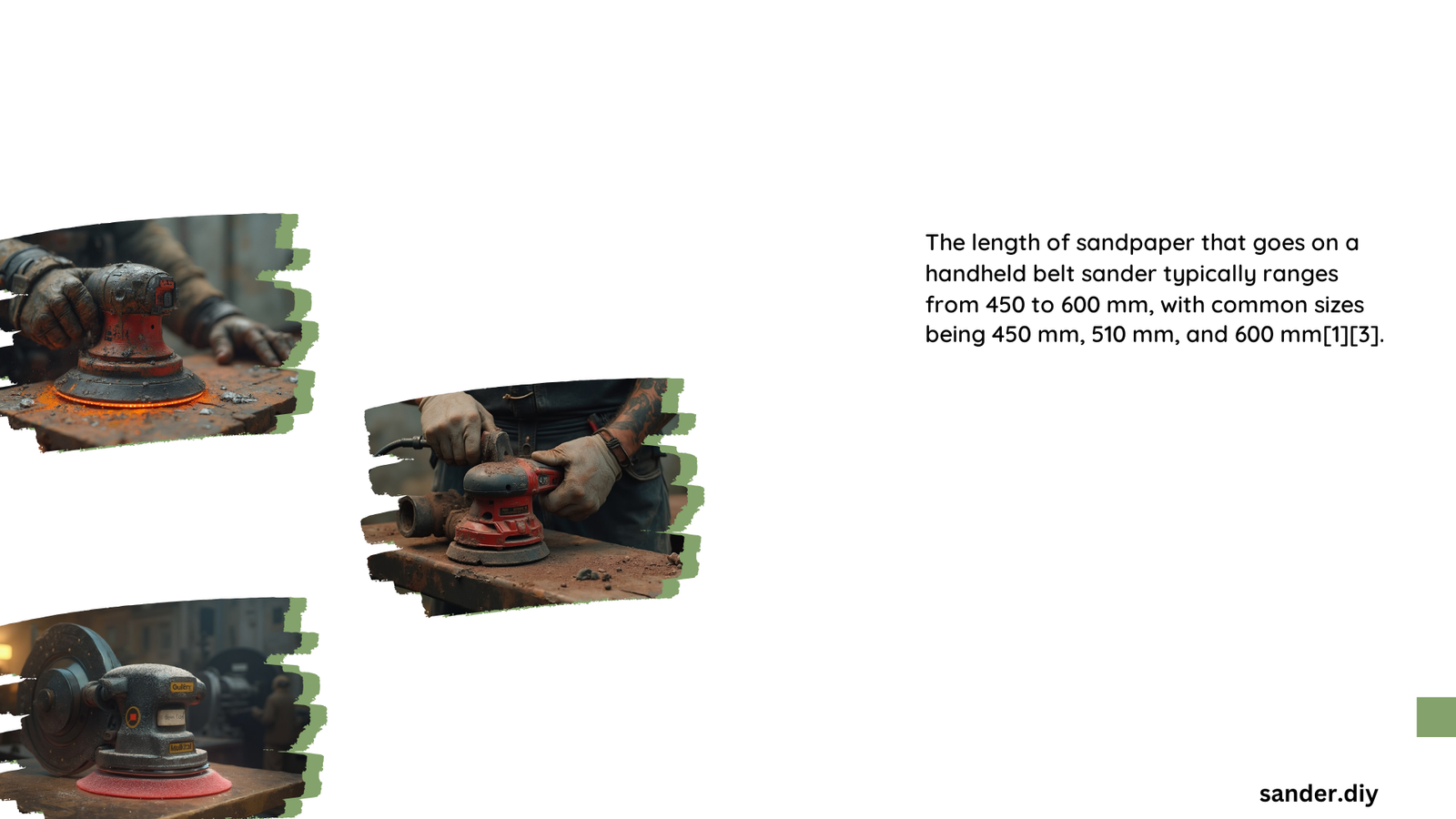When selecting sandpaper for a handheld belt sander, understanding the correct dimensions is crucial for achieving professional results. Handheld belt sanders typically use specific belt sizes that ensure optimal performance, with three primary dimensions dominating the market: 3\”x18\”, 3\”x21\”, and 4\”x24\”. These standardized lengths guarantee proper fit, efficient sanding, and maximum tool compatibility across various woodworking and metalworking applications.
What Are the Standard Sandpaper Lengths for Belt Sanders?
Common Belt Sander Dimensions
The most prevalent sandpaper lengths for handheld belt sanders include:
| Belt Size | Typical Applications | Recommended Use |
|---|---|---|
| 3″x18″ | Smaller projects, portable work | Light-duty woodworking |
| 3″x21″ | General purpose sanding | Home and professional DIY tasks |
| 4″x24″ | Heavy-duty applications | Industrial and professional woodworking |
Factors Determining Sandpaper Length Selection
Sander Model Compatibility
- Manufacturer specifications: Always check your specific sander’s manual
- Belt attachment mechanism: Different models have unique mounting systems
- Power and motor size: Larger sanders require longer belts
Material and Project Requirements
- Wood surface preparation
- Metal finishing
- Paint removal
- Rough shaping
- Fine detailing
How Do Grit Sizes Impact Sandpaper Performance?

Grit Range Breakdown
- Extra Coarse (24-36 grit): Aggressive material removal
- Coarse (40-60 grit): Rough surface preparation
- Medium (80-120 grit): General smoothing
- Fine (150-220 grit): Finishing and polishing
- Extra Fine (320-400 grit): Ultra-smooth surfaces
Abrasive Material Considerations
- Aluminum Oxide: Versatile, general-purpose
- Zirconia: Durable, ideal for hardwoods
- Ceramic: Extremely hard, metal-focused
- Silicon Carbide: Sharp, excellent for wet sanding
What Challenges Exist in Selecting Sandpaper?
Potential Pitfalls
- Incorrect belt length causing poor performance
- Mismatched grit for specific materials
- Premature belt wear
- Reduced sanding efficiency
Pro Tips for Selection
- Measure your current belt precisely
- Consider project requirements
- Invest in multiple grit sizes
- Purchase from reputable manufacturers
What Maintenance Practices Extend Sandpaper Life?
Care and Storage Recommendations
- Clean belts after each use
- Store in cool, dry environment
- Rotate belts to ensure even wear
- Replace when significant wear is visible
- Use appropriate tension settings
Performance Optimization Strategies
- Match belt to specific project needs
- Use correct sander speed
- Apply consistent pressure
- Avoid overheating abrasive surface
Expert Recommendations
Professional Insights
- Always prioritize quality over cost
- Invest in multiple grit sizes
- Understand your specific sander’s requirements
- Regular maintenance prevents premature wear
Budget Considerations
- Mid-range belts offer best value
- Bulk purchasing reduces overall cost
- Consider project frequency and intensity
Reference:
– Woodworking Tool Guide
– Professional Sander Maintenance
– Abrasive Material Selection
